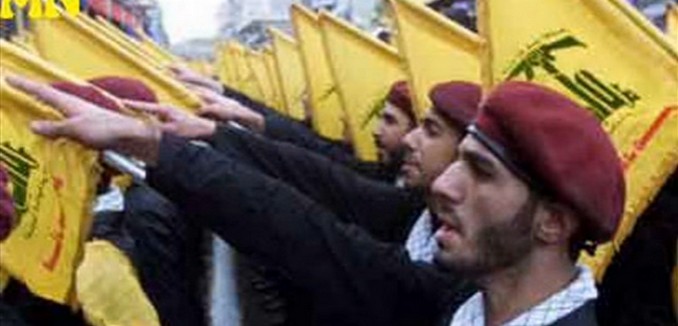Hezbollah has evolved from a Lebanese terrorist organization into the spearhead of an international militia network led by Iran, a major investigative article has revealed, published in The New York Times on Sunday.
The group, which is in complete political and military control over Lebanon, “is not just a power unto itself, but is one of the most important instruments in the drive for regional supremacy by its sponsor: Iran,” Ben Hubbard wrote.
Tehran is currently trying to secure a corridor from its border, through Iraq and all the way to the Mediterranean—providing it unhindered land access to its allies in Syria and Lebanon for the first time—a plan of which Hezbollah is a central component.
Israel is concerned that “Iran is busy turning Syria into a base of military entrenchment.” Photos revealed that Iran is airlifting troops to fight on behalf of Assad, in violation of UN Security Council Resolution 2231, which implemented the nuclear deal, and prohibits Iran from transferring weapons to other nations or provide services that involve the use of arms.
Based on months of interviews with officials, fighters, commanders and analysts, and with members of Hezbollah itself, Hubbard reported that Hezbollah has become Iran’s central instrument in all conflicts that matter to Tehran and that the group “has helped recruit, train and arm an array of new militant groups that are also advancing Iran’s agenda.”
Hezbollah has drastically increased its area of operation under Iranian guardianship. No longer just exercising power over Lebanon, the group sent legions of fighters to Syria to support the Assad regime, trained other Iranian-backed militia in Iraq, and supported the Houthi rebels in Yemen.
According to Hubbard, is it noteworthy that these Iranian-backed militia increasingly engage in cross-border operations. “In April, members of a Qatari royal hunting party kidnapped by militants in Iraq were released as part of a deal involving Hezbollah in Syria”, Hubbard wrote, adding that “In southern Syria, Iranian-backed forces are pushing to connect with their counterparts in Iraq. And in the battle for Aleppo last year— a turning point in the Syrian war—Iranian-supported militants hailed from so many countries their diversity amazed even those involved.”
Hezbollah’s leader Hassan Nasrallah threatened in June that thousands of Shiite militia fighters could join forces with Hezbollah in a future war with Israel. “This could open the way for thousands, even hundreds of thousands of fighters from all over the Arab and Islamic world to participate – from Iraq, Yemen, Iran, Afghanistan and Pakistan,” he said in a televised speech.
Israel fears that with Assad-aligned parties consolidating power in Syria, Hezbollah’s focus could again shift to war with Israel. Hezbollah has more than 100,000 rockets and missiles pointed at its neighbor and 30,000 trained fighters under weapons.
According to Hubbard, “Israel also says Hezbollah is so integrated into the Lebanese state that it may not differentiate between the two in a new war.” It is an assessment shared by other experts. “Hezbollah can’t pretend to be just a terror group in southern Lebanon. It is the state. It is Lebanon,” Seth Frantzman wrote in The Tower Magazine’s June/July edition.
[Photo: gnosticx / YouTube]




